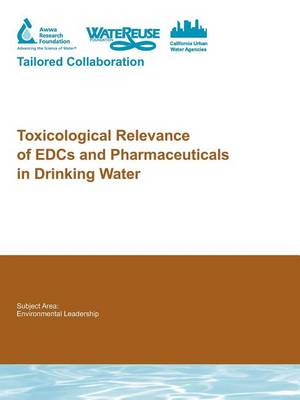Analytical technology has made it possible to detect and quantify nearly any compound known to humankind at diminishingly minute concentrations in water. Although the earliest reports of pharmaceuticals and steroid hormones in water date back nearly four decades, it is only within the past decade that the subject has come to the forefront of scientific and public attention. Today, we know definitively that trace levels of pharmaceuticals, potential EDCs, and other emerging contaminants do occur in source water, and to a lesser extent, in finished drinking water. Based on research thus far, it appears that many conventional and advanced treatment processes will greatly reduce the concentrations of these compounds. Nevertheless, considering the continued advancements in analytical technologies, today's non-detectable contaminants will be tomorrow's emerging contaminants. If presence/absence becomes our litmus test for risk and subsequent actions, treatment technology will be increasingly, and perhaps unnecessarily, costly and energy intensive. This is an especially important consideration due to the energy cost and greenhouse gas emissions of advanced treatment. For these reasons, it is of utmost importance to determine human health-based screening levels from which meaningful treatment goals and analytical detection limits can be established.
The primary objective of this project was to establish a suite of indicator pharmaceuticals and potential endocrine disrupting compounds (EDCs) to be used for evaluating the exposure and health implications from drinking water. A secondary objective was the development of robust analytical methods to identify and quantify the indicator compounds in raw and finished drinking water. The final objective was the evaluation of toxicity data with occurrence data in order to develop a human health risk assessment for indicator pharmaceuticals and potential EDCs in U.S. drinking waters. A suite of 62 indicator pharmaceuticals and potential EDCs were selected based upon literature reviews of potential for toxicity, propensity for occurrence, and analytical capability. Robust analytical methods utilizing isotope-dilution and tandem mass spectrometry were developed in order to monitor the raw and finished waters of 20 U.S. drinking water facilities with ng/L sensitivity. An in vitro bioassay was used to screen for estrogenicity in the same waters. A series of bottled waters and food and beverage items were also screened for estrogenicity for a benchmark comparison. Risk evaluations for exposure through drinking water were conducted for 16 pharmaceuticals, 10 potential EDCs, and 3 steroid hormones. ADIs were calculated using methods consistent with USEPA approaches for determining levels of exposure to environmental contaminants.
- ISBN10 184339250X
- ISBN13 9781843392507
- Publish Date 14 July 2009
- Publish Status Out of Print
- Out of Print 27 February 2017
- Publish Country GB
- Imprint IWA Publishing
- Format Paperback
- Pages 146
- Language English
- URL http://iwapublishing.com/books/9781843392507/toxicological-relevance-edcs-and-pharmaceuticals-drinking-water
